Mongolian Freshwater Ecosystems Under Climate Change and Anthropogenic Pressure: A Case Study of Ugii Lake
Abstract
1. Introduction
2. Materials and Methods
2.1. Study Area
2.2. Sampling Design and Data Collection
2.2.1. Water Quality Assessment
2.2.2. Vegetation Survey
2.2.3. Socio-Economic Surveys and Interviews
2.3. Data Analysis
2.3.1. Water Quality Analysis
2.3.2. Vegetation Data Analysis
2.3.3. Socio-Economic Data Analysis
3. Results
3.1. Water Quality
3.2. Vegetation Analysis
3.3. Socio-Economic Perspectives
4. Discussion
4.1. Environmental Changes of Ugii Lake
4.2. Impact of Climate Change on Ugii Lake
5. Conclusions
- Water quality challenges: Distinct seasonal variations in water quality were observed across the Ugii Lake watershed. In July and October, the lake displayed relatively fresh, bicarbonate-dominated water types with moderate total dissolved solids (TDS) and stable pH, suggesting limited mineralization influenced by precipitation and minimal evaporation. In contrast, August showed elevated TDS and pH values, particularly in Ugii Lake, likely due to intense evaporation and increased biological activity during warmer periods. Springs exhibited stable ionic composition, TDS, and pH, serving as a reliable indicator of groundwater quality and showing minimal seasonal variation. This contrast highlights the differing hydrological processes between surface and groundwater systems.
- Vegetation decline and habitat degradation: Native vegetation is declining due to human activities such as grazing and tourism, leading to increased erosion and reduced water retention in the lake’s catchment. Restoration measures, including rotational grazing and restricted access, are vital for protecting vegetation and preventing further ecological degradation.
- Socio-economic and health implications: The local community’s dependence on Ugii Lake for water, fishing, and tourism underlines the socio-economic importance of maintaining the lake’s ecological health. Reported health concerns linked to water quality issues emphasize the need for routine monitoring and the development of more robust waste management systems.
- Community-based conservation: Community support for initiatives such as waste management and restricted recreational zones indicates strong potential for local, participatory conservation. Engaging residents in planning and implementing conservation strategies is critical to achieving long-term ecological and economic sustainability for the lake.
Author Contributions
Funding
Data Availability Statement
Acknowledgments
Conflicts of Interest
References
- Sumiya, E.; Dorjsuren, B.; Yan, D.; Dorligjav, S.; Wang, H.; Enkhbold, A.; Weng, B.; Qin, T.; Wang, K.; Gerelmaa, T.; et al. Changes in Water Surface Area of the Lake in the Steppe Region of Mongolia: A Case Study of Ugii Nuur Lake, Central Mongolia. Water 2020, 12, 1470. [Google Scholar] [CrossRef]
- Schwanghart, W.; Frechen, M.; Kuhn, N.J.; Schütt, B. Holocene environmental changes in the Ugii Nuur basin, Mongolia. Palaeogeogr. Palaeoclimatol. Palaeoecol. 2009, 279, 160–171. [Google Scholar] [CrossRef]
- Lehner, B.; Döll, P. Development and validation of a global database of lakes, reservoirs, and wetlands. J. Hydrol. 2004, 296, 1–22. [Google Scholar] [CrossRef]
- Huang, J.; Yu, H.; Guan, X.; Wang, G.; Guo, R. Dryland climate change: Recent progress and challenges. Rev. Geophys. 2017, 55, 719–778. [Google Scholar] [CrossRef]
- Adrian, R.; O’Reilly, C.M.; Zagarese, H.; Baines, S.B.; Hessen, D.O.; Keller, W.; Livingstone, D.M.; Sommaruga, R.; Straile, D.; Van Donk, E.; et al. Lakes as sentinels of climate change. Limnol. Oceanogr. 2009, 54, 2283–2297. [Google Scholar] [CrossRef]
- Hostetler, S.W. Hydrological and Thermal Response of Lakes to Climate: Description and Modeling. In Physics and Chemistry of Lakes; Lerman, A., Imboden, D.M., Gat, J.R., Eds.; Springer: Berlin/Heidelberg, Germany, 1995; pp. 63–82. [Google Scholar] [CrossRef]
- Labaj, A.L.; Michelutti, N.; Smol, J.P. Annual stratification patterns in tropical mountain lakes reflect altered thermal regimes in response to climate change. Fundam. Appl. Limnol. 2018, 191, 267–275. [Google Scholar] [CrossRef]
- Vincent, W.F. Effects of Climate Change on Lakes. In Encyclopedia of Inland Waters; Likens, G.E., Ed.; Elsevier: Amsterdam, The Netherlands, 2009; pp. 55–60. [Google Scholar] [CrossRef]
- Michelutti, N.; Wolfe, A.P.; Cooke, C.A.; Hobbs, W.O.; Vuille, M.; Smol, J.P. Climate change forces new ecological states in tropical Andean lakes. PLoS ONE 2015, 10, e0115338. [Google Scholar] [CrossRef]
- Rahel, F.J.; Olden, J.D. Assessing the effects of climate change on aquatic invasive species. Conserv. Biol. 2008, 22, 521–533. [Google Scholar] [CrossRef]
- Gleick, P.H. Basic water requirements for human activities: Meeting basic needs. Water Int. 1996, 21, 83–92. [Google Scholar] [CrossRef]
- Birk, S.; Chapman, D.; Carvalho, L.; Spears, B.M.; Andersen, H.E.; Argillier, C.; Auer, S.; Baattrup-Pedersen, A.; Banin, L.; Beklioğlu, M.; et al. Impacts of multiple stressors on freshwater biota across spatial scales and ecosystems. Nat. Ecol. Evol. 2020, 4, 1060–1068. [Google Scholar] [CrossRef]
- Schneider, P.; Hook, S.J. Space observations of inland water bodies show rapid surface warming since 1985. Geophys. Res. Lett. 2010, 37, L22405. [Google Scholar] [CrossRef]
- Houghton, A.; English, P. An approach to developing local climate change environmental public health indicators, vulnerability assessments, and projections of future impacts. J. Environ. Public Health 2014, 2014, 132057. [Google Scholar] [CrossRef] [PubMed]
- Woolway, R.I.; Sharma, S.; Smol, J.P. Lakes in Hot Water: The Impacts of a Changing Climate on Aquatic Ecosystems. Bioscience 2022, 72, 1050–1061. [Google Scholar] [CrossRef]
- MNS ISO 10523:2001; Water Quality—Determination of pH. Mongolian Agency for Standardization and Metrology: Ulaanbaatar, Mongolia, 2001.
- MNS ISO 5667-6:2001; Water Quality—Sampling—Part 6: Guidance on Sampling of Rivers and Streams. Mongolian Agency for Standardization and Metrology: Ulaanbaatar, Mongolia, 2001.
- MNS ISO 7888:1999; Water Quality—Determination of Electrical Conductivity. Mongolian Agency for Standardization and Metrology: Ulaanbaatar, Mongolia, 1999.
- MNS 4423:1997; Drinking Water—Method of Measuring Dry Residue. Mongolian Agency for Standardization and Metrology: Ulaanbaatar, Mongolia, 1997.
- MNS ISO 7027:1999; Water Quality—Determination of Turbidity. Mongolian Agency for Standardization and Metrology: Ulaanbaatar, Mongolia, 1999.
- MNS ISO 11923:2001; Water Quality—Determination of Suspended Solids by Filtration Through Glass-Fibre Filters. Mongolian Agency for Standardization and Metrology: Ulaanbaatar, Mongolia, 2001.
- MNS ISO 6059:2005; Water Quality—Determination of the Sum of Calcium and Magnesium—EDTA Titrimetric Method. Mongolian Agency for Standardization and Metrology: Ulaanbaatar, Mongolia, 2000.
- MNS ISO 9297:2001; Water Quality—Determination of Chloride—Silver Nitrate Titration with Chromate Indicator (Mohr’s Method). Mongolian Agency for Standardization and Metrology: Ulaanbaatar, Mongolia, 2001.
- MNS ISO 9280:2001; Water Quality—Determination of Sulfate—Gravimetric Method by Precipitation with Barium Sulfate. Mongolian Agency for Standardization and Metrology: Ulaanbaatar, Mongolia, 2001.
- MNS ISO 9963-1:2001; Water Quality—Determination of Alkalinity—Part 1: Determination of Total and Composite Alkalinity. Mongolian Agency for Standardization and Metrology: Ulaanbaatar, Mongolia, 2001.
- MNS ISO 8467:2001; Water Quality—Determination of Permanganate Index. Mongolian Agency for Standardization and Metrology: Ulaanbaatar, Mongolia, 2001.
- MNS ISO 11732:2005; Water Quality—Determination of Ammonium Nitrogen—Method by Flow Analysis (CFA and FIA) and Spectrometric Detection. Mongolian Agency for Standardization and Metrology: Ulaanbaatar, Mongolia, 2005.
- MNS ISO 6777:2001; Water Quality—Determination of Nitrite—Molecular Absorption Spectrometric Method. Mongolian Agency for Standardization and Metrology: Ulaanbaatar, Mongolia, 2001.
- MNS ISO 7890-3:2001; Water Quality—Determination of Nitrate—Part 3: Spectrometric Method Using Sulfosalicylic Acid. Mongolian Agency for Standardization and Metrology: Ulaanbaatar, Mongolia, 2001.
- MNS ISO 11905-1:2001; Water Quality—Determination of Nitrogen—Part 1: Method Using Oxidative Digestion with Peroxodisulfate. Mongolian Agency for Standardization and Metrology: Ulaanbaatar, Mongolia, 2001.
- MNS ISO 6878:2001; Water Quality—Determination of Phosphorus—Ammonium Molybdate Spectrometric Method. Mongolian Agency for Standardization and Metrology: Ulaanbaatar, Mongolia, 2001.
- MNS ISO 5814:2005; Water Quality—Determination of Dissolved Oxygen—Electrochemical Probe Method. Mongolian Agency for Standardization and Metrology: Ulaanbaatar, Mongolia, 2001.
- MNS ISO 6060:2001; Water Quality—Determination of the Chemical Oxygen Demand. Mongolian Agency for Standardization and Metrology: Ulaanbaatar, Mongolia, 2001.
- MNS ISO 5815-1:2008; Water Quality—Determination of Biochemical Oxygen Demand After N Days (BODₙ)—Part 1: Dilution and Seeding Method with Allylthiourea Addition. Mongolian Agency for Standardization and Metrology: Ulaanbaatar, Mongolia, 2008.
- Struck, J.; Bliedtner, M.; Strobel, P.; Schumacher, S.; Bazarradnaa, E.; Zech, R.; Zech, W. Central Mongolian lake sediments reveal new insights on climate change and equestrian empires in the eastern steppes. Sci. Rep. 2022, 12, 2829. [Google Scholar] [CrossRef]
- Austin, J.A.; Colman, S.M. Lake Superior summer water temperatures are increasing more rapidly than regional air temperatures: A positive ice-albedo feedback. Geophys. Res. Lett. 2007, 34, L06604. [Google Scholar] [CrossRef]
- Saros, J.E.; Stone, J.R.; Pederson, G.T.; Slemmons, K.E.; Spanbauer, T.; Schliep, A.; Cahl, D.; Engstrom, D.R. Climate-induced changes in lake ecosystem structure inferred from coupled neo- and paleoecological approaches. Ecology 2012, 93, 2155–2164. [Google Scholar] [CrossRef]
- Saha, T.K.; Sajjad, H.; Roshani, R. Exploring the impact of land use/land cover changes on the dynamics of Deepor wetland (a Ramsar site) in Assam, India using geospatial techniques and machine learning models. Model. Earth Syst. Environ. 2024, 10, 4043–4065. [Google Scholar] [CrossRef]
- Moisa, M.B.; Bulto, T.W.; Werku, B.C.; Mume, A.B.; Shibru, S. Analyzing wetland dynamics using geospatial techniques: A case of Abay Choman and Jimma Geneti watershed, Horo Guduru Wollega Zone, Western Ethiopia. Air Soil Water Res. 2023, 16, 11786221221150183. [Google Scholar] [CrossRef]
- Rahimi, L.; Bahram, M.; Ahmad, Y. Assessing and Modeling the Impacts of Wetland Land Cover Changes on Water Provision and Habitat Quality Ecosystem Services. Nat. Resour. Res. 2020, 29, 3701–3718. [Google Scholar] [CrossRef]
- Nyamtseren, M.; Pham, T.D.; Vu, T.T.P.; Navaandorj, I.; Shoyama, K. Mapping Vegetation Changes in Mongolian Grasslands (1990–2024) Using Landsat Data and Advanced Machine Learning Algorithm. Remote Sens. 2025, 17, 400. [Google Scholar] [CrossRef]
- Cohen, A.S.; Gergurich, E.L.; Kraemer, B.M.; McGlue, M.M.; McIntyre, P.B.; Russell, J.M.; Simmons, J.D.; Swarzenski, P.W. Climate warming reduces fish production and benthic habitat in Lake Tanganyika, one of the most biodiverse freshwater ecosystems. Proc. Natl. Acad. Sci. USA 2016, 113, 9563–9568. [Google Scholar] [CrossRef]
- Hampton, S.E.; Scheuerell, M.D.; Church, M.J.; Melack, J.M. Long-term perspectives in aquatic research. Limnol Ocean. 2019, 64, S2–S10. [Google Scholar] [CrossRef]


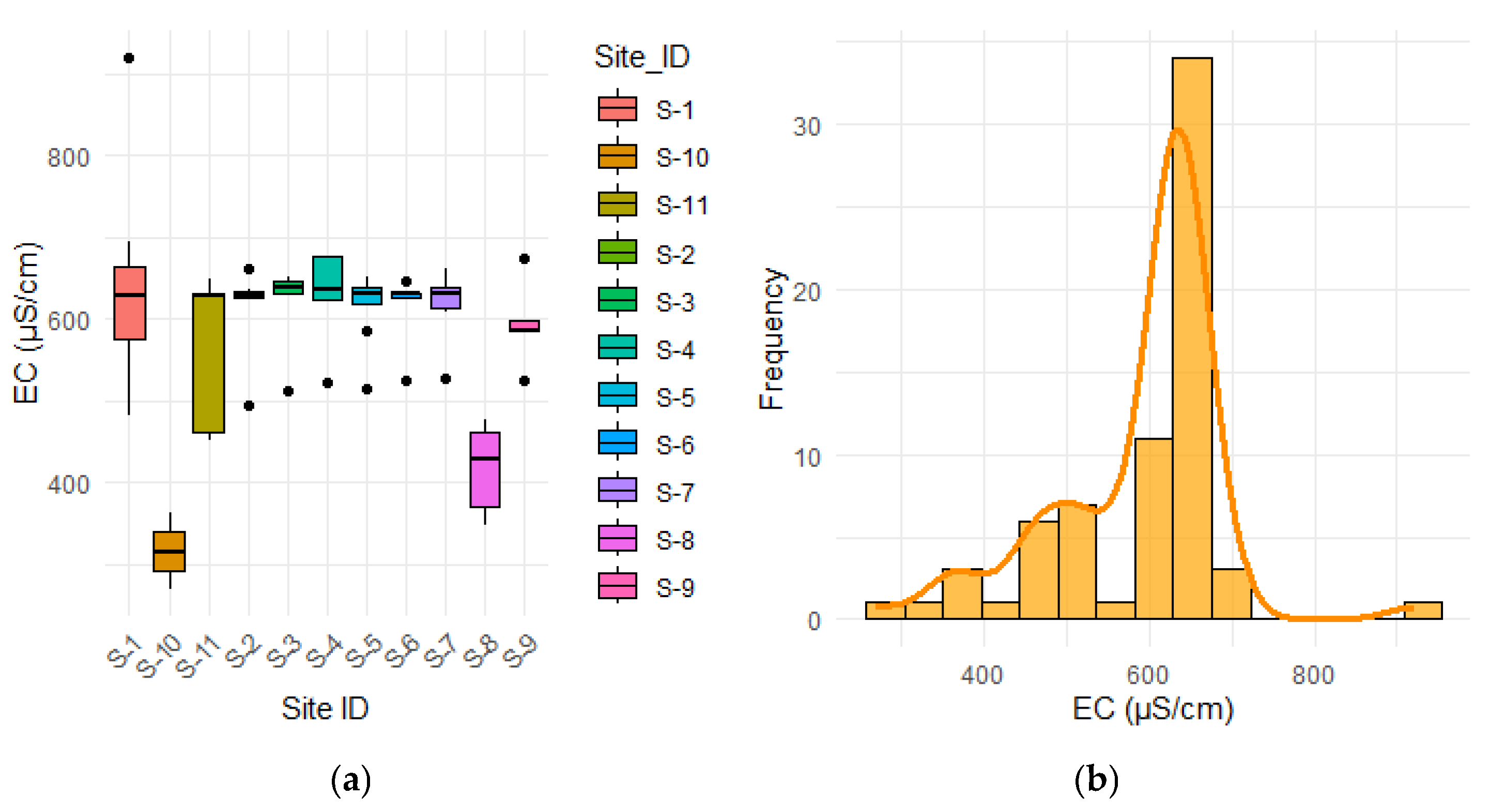
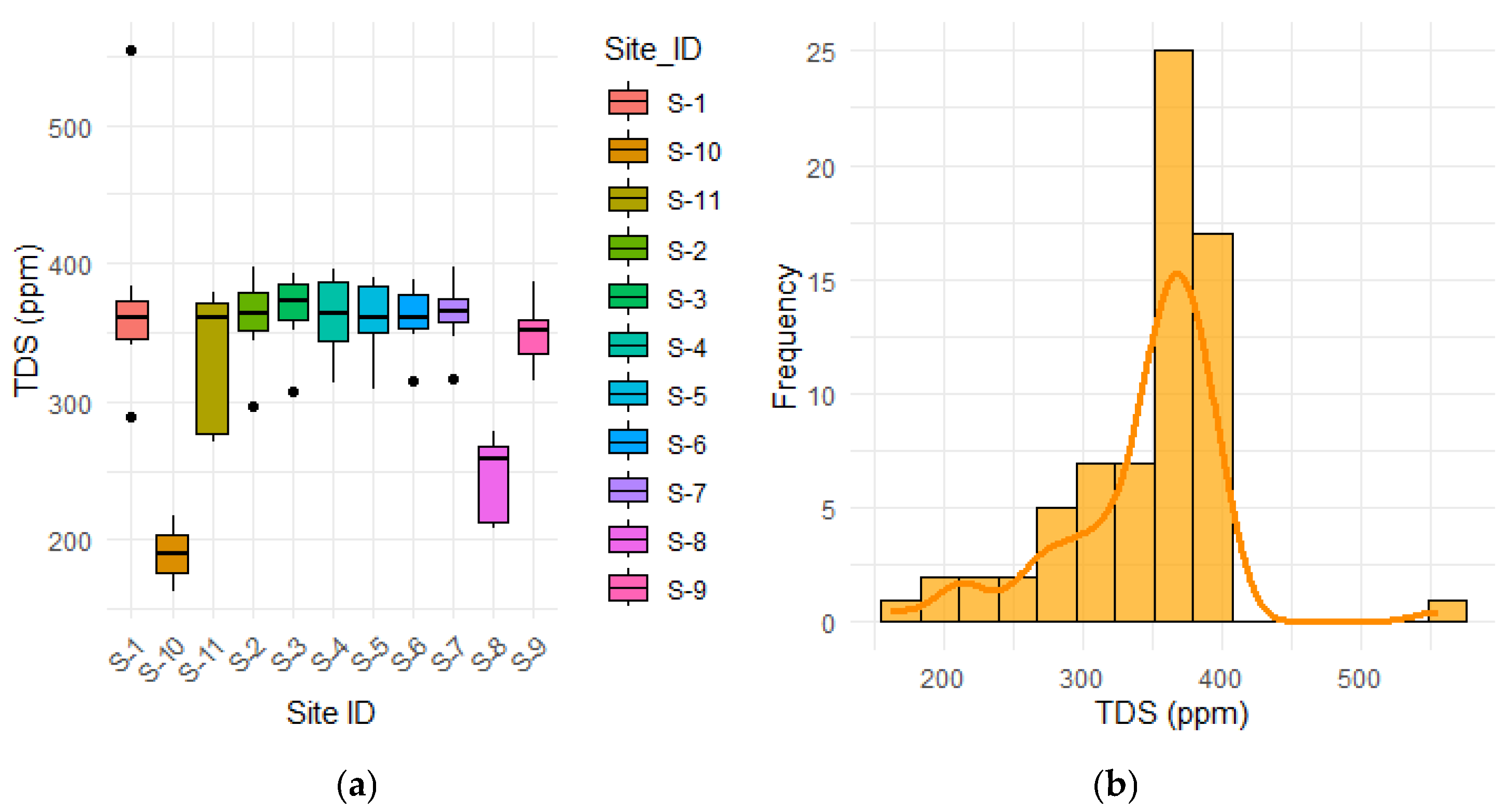


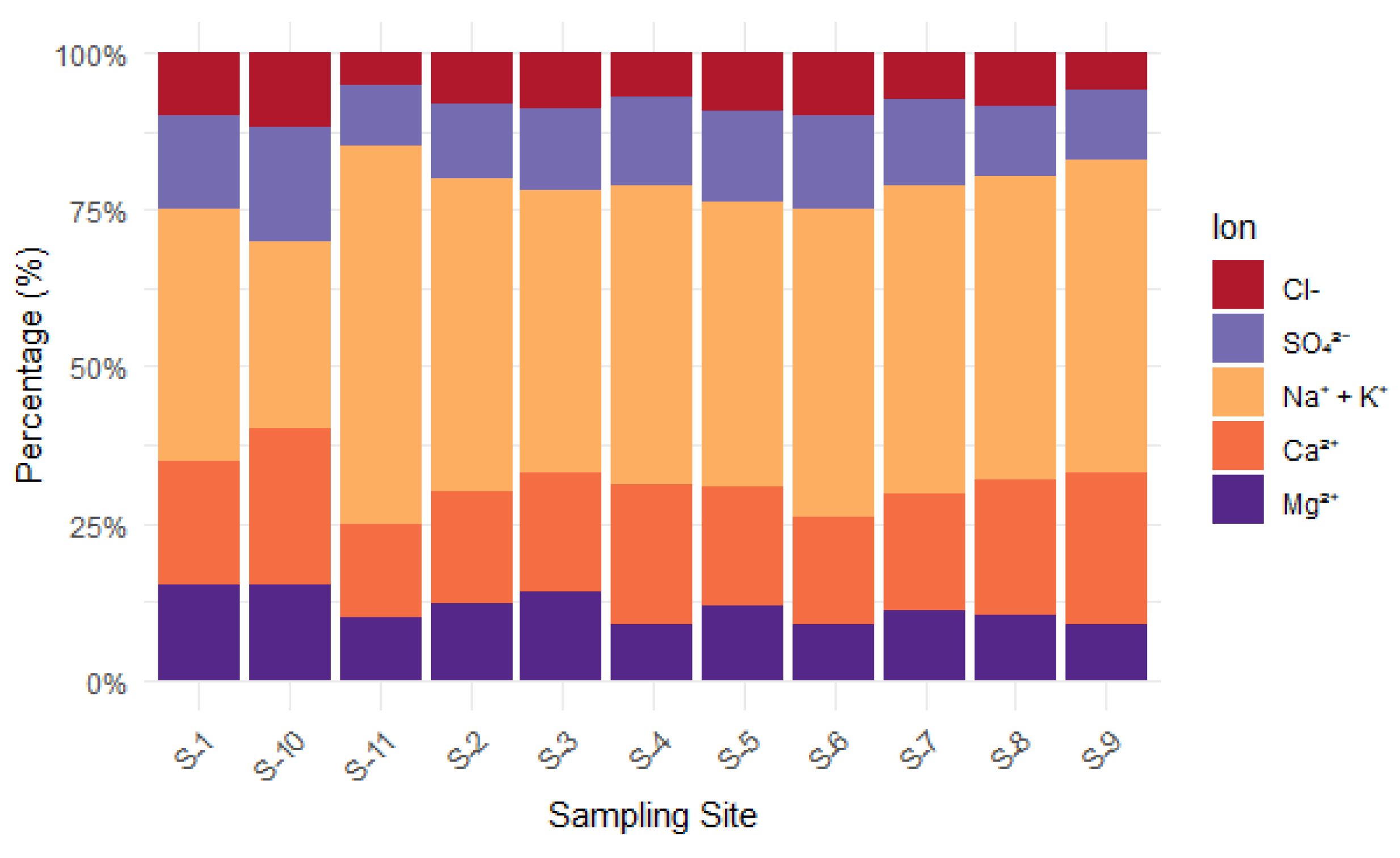
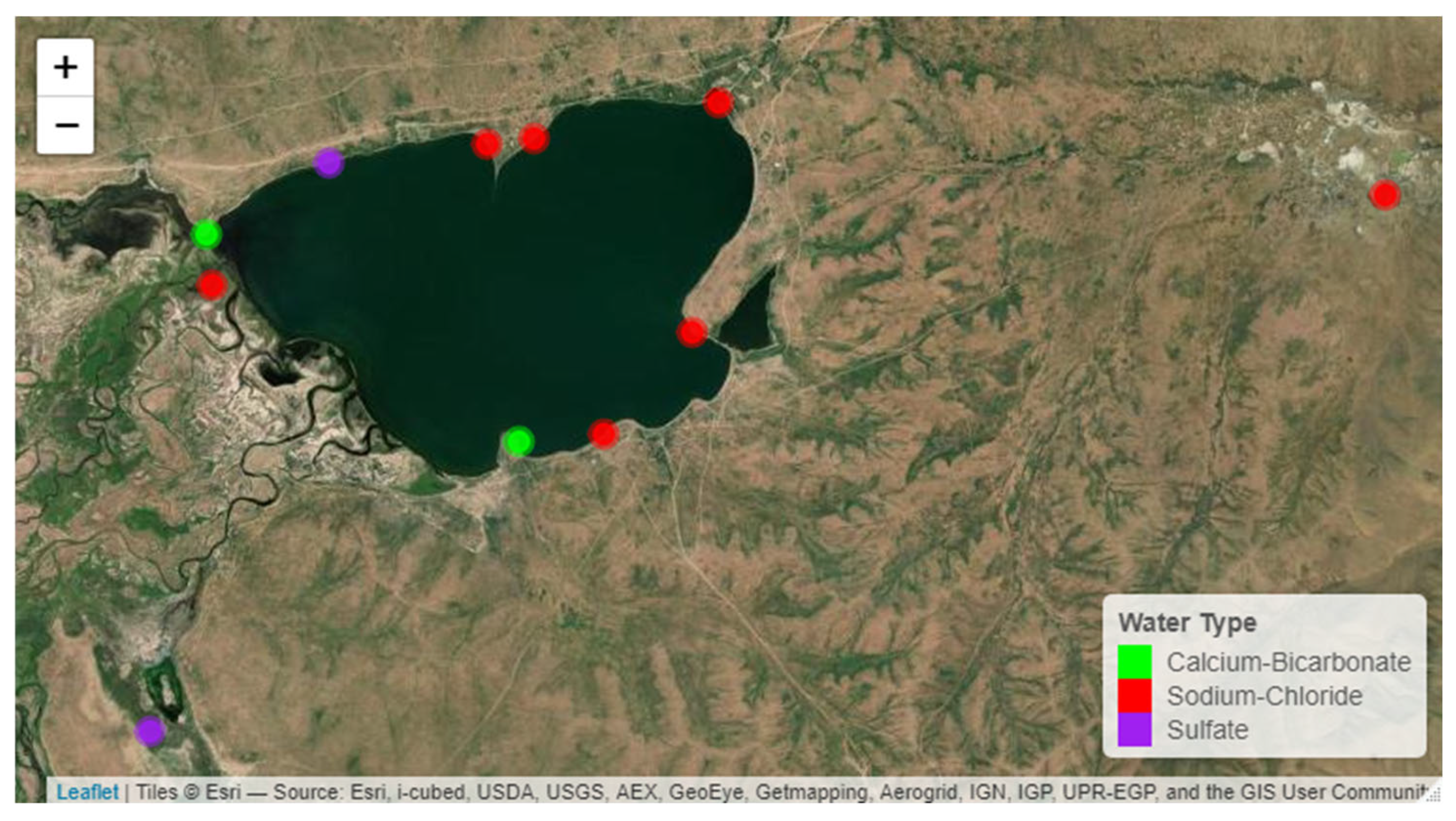
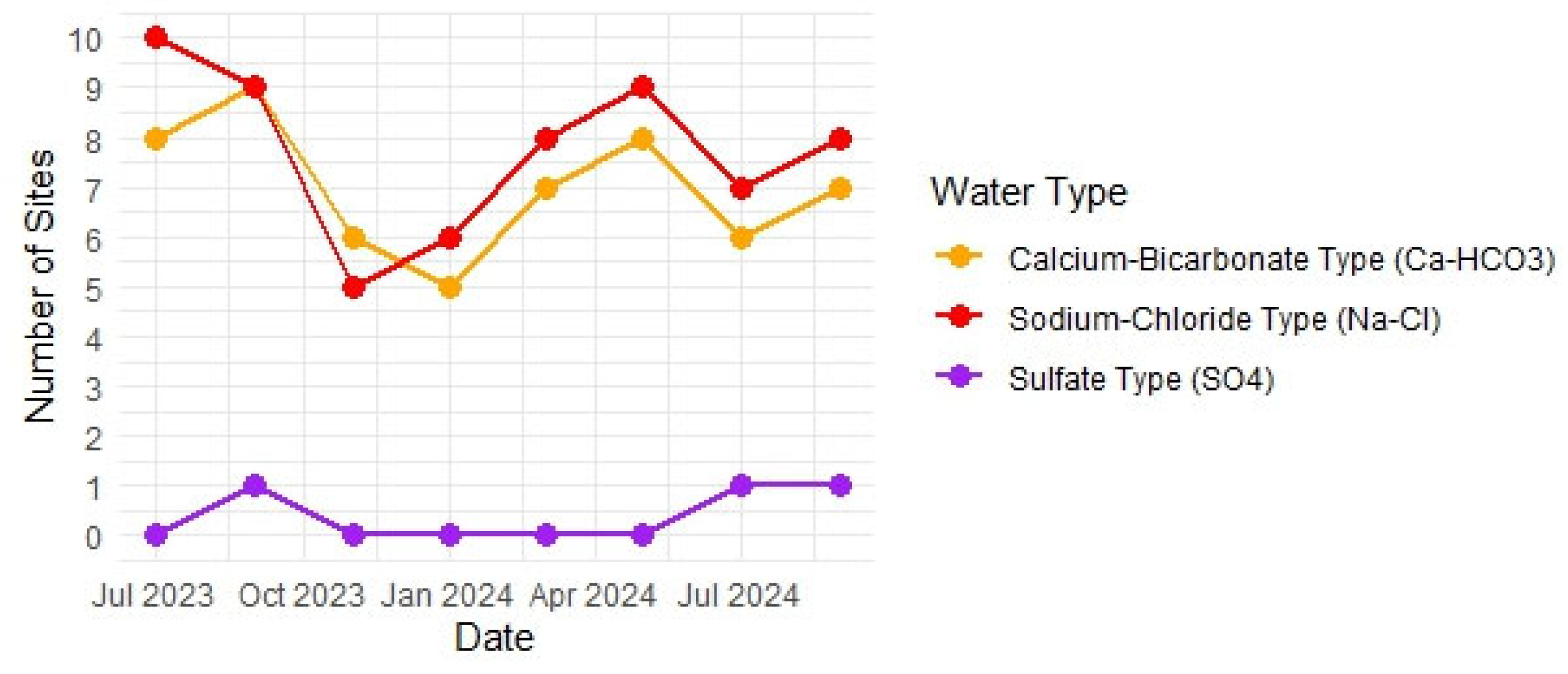

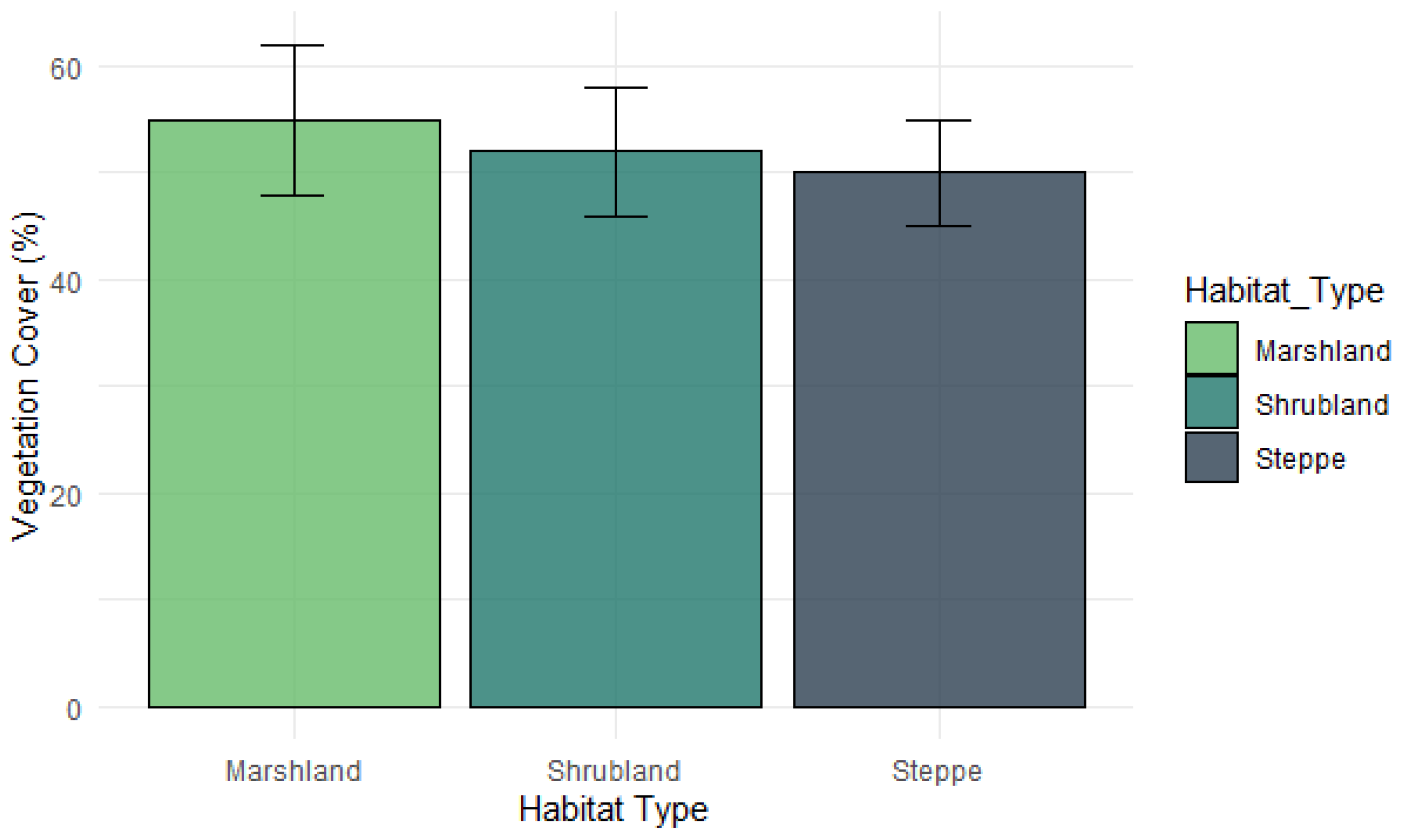
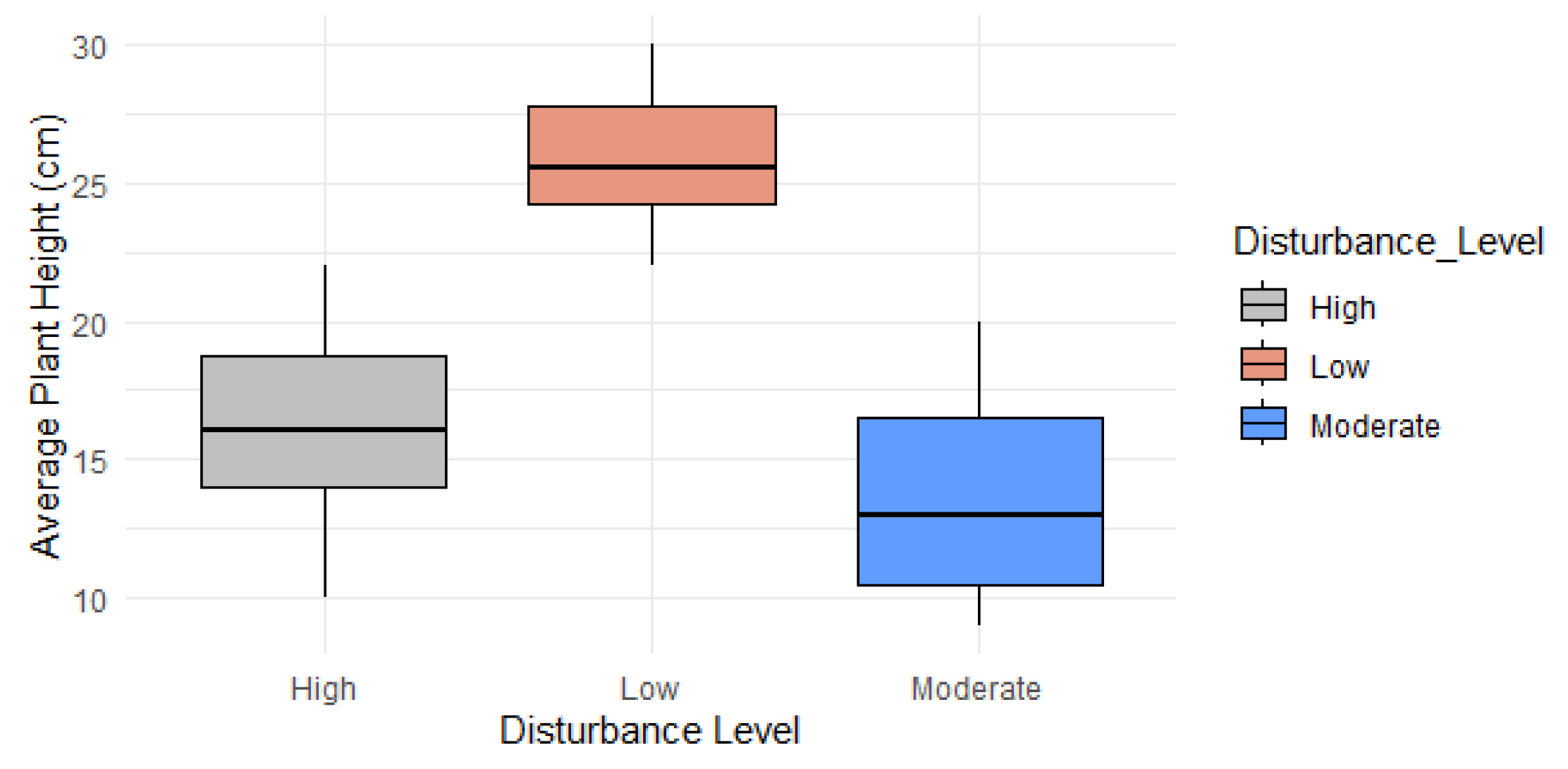
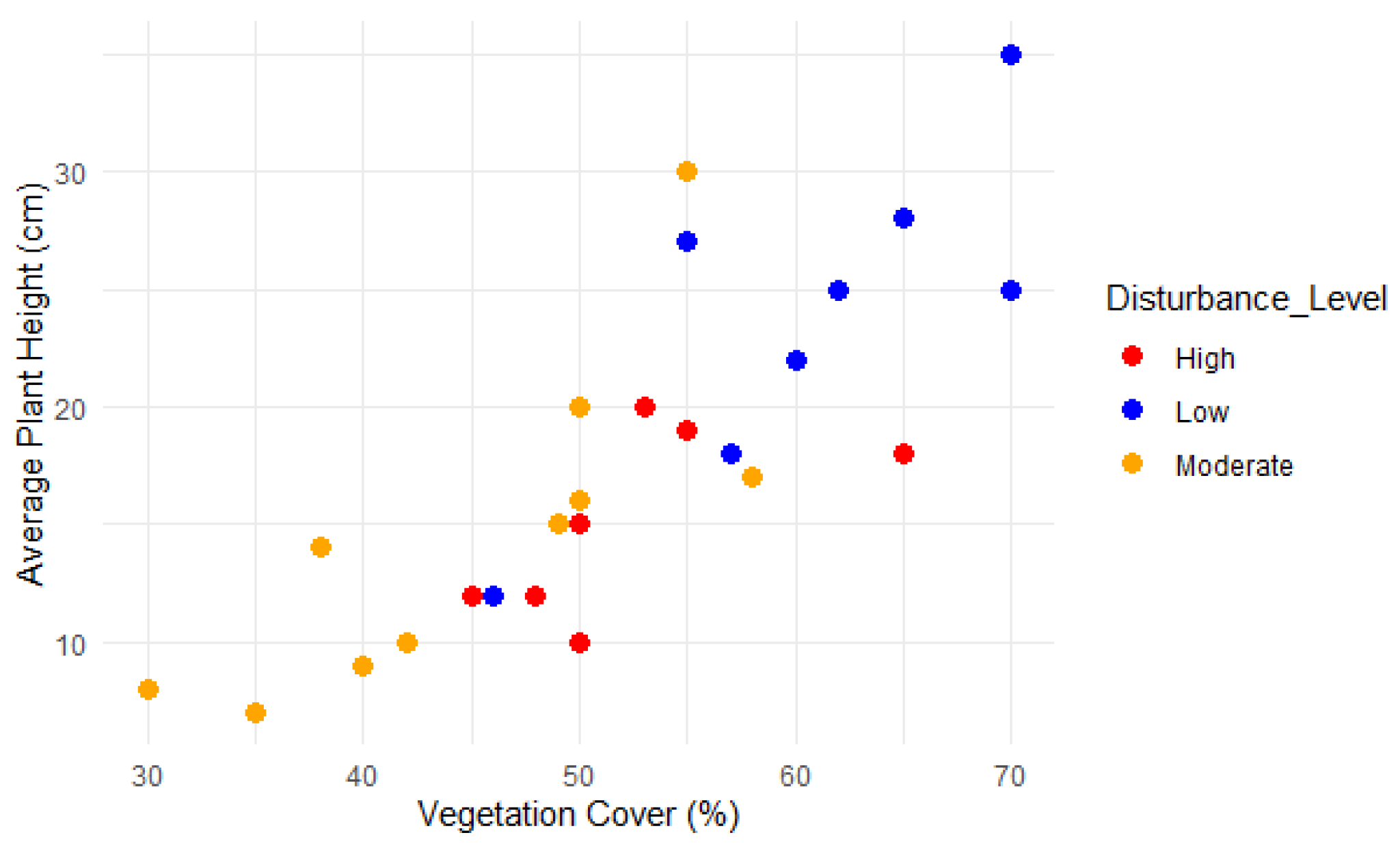

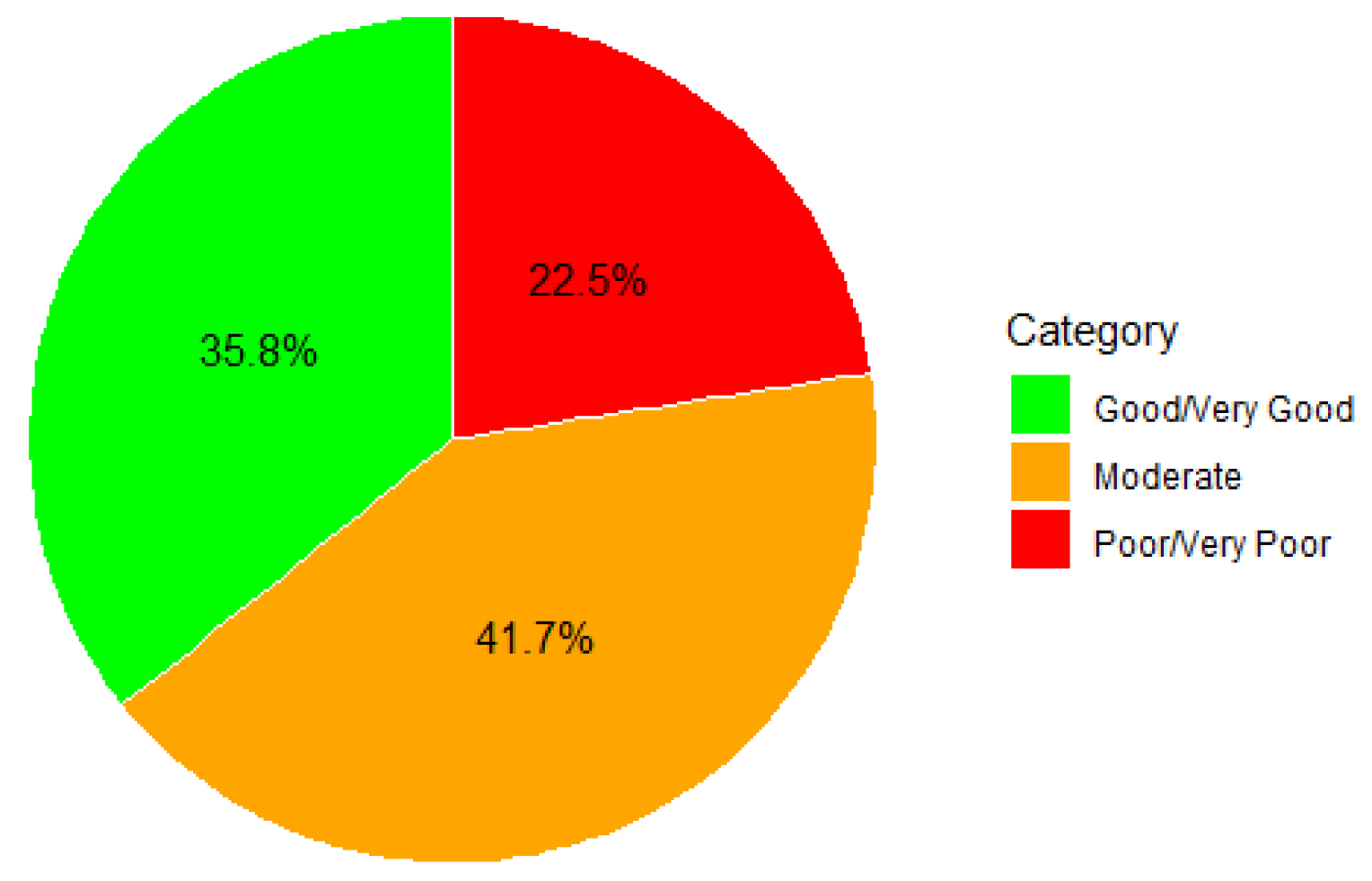

| Parameters | Units | Standard of Determination | Method | |
|---|---|---|---|---|
| Temperature | T | °C | MNS ISO 10523:2001 [16] | Measurement with HI98195 multiparameter probe |
| pH | pH | MNS ISO 5667-6:2001 [17] | ||
| EC | EC | µS/cm | MNS ISO 7888:1999 [18] | |
| Total dissolved solids | TDS | Ppm | MNS 4423:1997 [19] | |
| Turbidity | NTU | MNS ISO 7027:1999 [20] | Measurement with HI93703 turbidity meter | |
| Suspended matter | TSS | MNS ISO 11923:2001 [21] | Gravimetric method (filtration through glass-fiber filters and weighing) | |
| Calcium | Ca2+ | mg/L | MNS ISO 6059:2005 [22] | Trilonometric titration (EDTA method) |
| Magnesium | Mg2+ | mg/L | Trilonometric titration (EDTA method) | |
| Chloride | Cl− | mg/L | MNS ISO 9297:2001 [23] | Mohr’s titration method (silver nitrate with chromate indicator) |
| Sulfate | SO42− | mg/L | MNS ISO 9280:2001 [24] | Gravimetric method (precipitation as barium sulfate) |
| Carbonate, hydrocarbonate | CO32−, HCO3− | mg/L | MNS ISO 9963-1:2001 [25] | Acidimetry (titration with standard acid, methyl orange indicator) |
| Oxidation of permanganate | COD | mg/L | MNS ISO 8467:2001 [26] | Permanganate oxidation titration method |
| Ammonia | NH4+ | mg/L | MNS ISO 11732:2005 [27] | Flow injection analysis (FIA) with indophenol blue reaction, HI83399 photometer |
| Nitrite | NO2− | mg/L | MNS ISO 6777:2001 [28] | Diazotization-spectrophotometric method, Palintest 7100 photometer |
| Nitrate | NO3− | mg/L | MNS ISO 7890-3:2001 [29] | Spectrophotometric method with sulfosalicylic acid, HI83399 photometer |
| Total nitrogen | TN | mg/L | MNS ISO 11905-1:2001 [30] | Oxidative digestion with potassium peroxodisulfate and spectrophotometric detection |
| Total phosphorus | TP | mg/L | MNS ISO 6878:2001 [31] | Digestion and ammonium molybdate colorimetric method |
| Dissolved oxygen | DO | mg/L | MNS ISO 5814:2005 [32] | Electrochemical probe method (DO meter HI98198) or Winkler titration |
| Chemical oxygen demand | COD | mg/L | MNS ISO 6060:2001 [33] | Dichromate oxidation method; detection by HI83399 photometer or titration |
| Biological oxygen demand | BOD | mg/L | MNS ISO 5815-1:2008 [34] | 5-day incubation method with DO measurement (HI83399 photometer) |
Disclaimer/Publisher’s Note: The statements, opinions and data contained in all publications are solely those of the individual author(s) and contributor(s) and not of MDPI and/or the editor(s). MDPI and/or the editor(s) disclaim responsibility for any injury to people or property resulting from any ideas, methods, instructions or products referred to in the content. |
© 2025 by the authors. Licensee MDPI, Basel, Switzerland. This article is an open access article distributed under the terms and conditions of the Creative Commons Attribution (CC BY) license (https://creativecommons.org/licenses/by/4.0/).
Share and Cite
Navaandorj, I.; Tsogtbayar, E.; Tsogtbaatar, S.; Dashdondog, G.-O.; Nyamtseren, M.; Shoyama, K. Mongolian Freshwater Ecosystems Under Climate Change and Anthropogenic Pressure: A Case Study of Ugii Lake. Land 2025, 14, 998. https://doi.org/10.3390/land14050998
Navaandorj I, Tsogtbayar E, Tsogtbaatar S, Dashdondog G-O, Nyamtseren M, Shoyama K. Mongolian Freshwater Ecosystems Under Climate Change and Anthropogenic Pressure: A Case Study of Ugii Lake. Land. 2025; 14(5):998. https://doi.org/10.3390/land14050998
Chicago/Turabian StyleNavaandorj, Itgelt, Erdenetsetseg Tsogtbayar, Solongo Tsogtbaatar, Gerelt-Od Dashdondog, Mandakh Nyamtseren, and Kikuko Shoyama. 2025. "Mongolian Freshwater Ecosystems Under Climate Change and Anthropogenic Pressure: A Case Study of Ugii Lake" Land 14, no. 5: 998. https://doi.org/10.3390/land14050998
APA StyleNavaandorj, I., Tsogtbayar, E., Tsogtbaatar, S., Dashdondog, G.-O., Nyamtseren, M., & Shoyama, K. (2025). Mongolian Freshwater Ecosystems Under Climate Change and Anthropogenic Pressure: A Case Study of Ugii Lake. Land, 14(5), 998. https://doi.org/10.3390/land14050998







